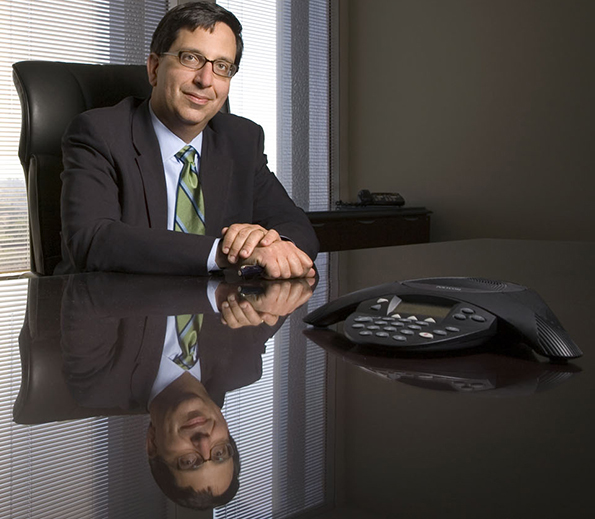During her 25 years in the business, Kalita Blessing has always helped her clients give to charity, trying to ensure the gifts were efficient and effective from a financial planning perspective.
But in 2012, she decided to go one step further by getting a Chartered Advisor in Philanthropy (CAP) designation (developed by the American College). The Dallas-based advisor made this a focal point of her practice, adding it to her bio along with things like serving on the board of the YMCA Foundation and the financial advisory committee of a monastery.
That kind of professional focus can get an advisor noticed. In August, for example, two separate women searching for a financial advisor each found Blessing on her website. Impressed by the commitment to philanthropy, they each set up meetings. Each is worth “north of $1 million,” according to Blessing; they’re not clients yet, but close. “They both want to include charitable giving in their financial plans,” says Blessing, whose firm, Quest Capital Management, has about $1.1 billion in assets and is affiliated with Raymond James. “They appreciate my commitment.”
Blessing emphasizes that she got her CAP primarily to solidify her expertise in an area of deep interest, but advising clients about charitable giving can help you stand out. That’s partly because you won’t have a lot of competition: Encouraging clients to give away thousands of dollars means saying goodbye to potential assets and, as a result, most advisors don’t make it a priority. “My clients really appreciate it when they know we’re doing something that could be contrary to our own interest,” says Josh Nelson, CEO of Keystone Financial Services, a Loveland, Colo., firm with about $125 million in assets.
Certainly, the area appeals to the wealthy. But it also is useful when serving less-affluent clients who might, say, tithe. And, with charitable giving on an upswing—Americans donated about $358 billion in 2014, exceeding the previous peak in 2007, according to Giving USA—it’s a good time to get in on the act.
Specializing in philanthropy requires more than knowing about investment vehicles, though that’s important. It involves learning how to talk to clients about their legacies. You also can’t fake an interest. Like Blessing, the most successful advisors are genuinely passionate about it.

The first order of business is developing a solid understanding of the area. For some advisors, that’s easy. Jeff Fishman, for example, who runs JSF Financial, a Los Angeles firm with $700 million in assets, began his career as a tax and estate planning lawyer, so he had a head start when he launched his practice in 1996. Juan Ros worked for nonprofits for 11 years as a charitable gift planner before joining Lamia Financial Group, which has about $200 million in assets, in Thousand Oaks, Calif., in 2012.
Know Your Client Base
But advisors without such experience can take continuing education classes or seek out seminars on planned giving that, according to Ros, are frequently held by charitable organizations. Blessing was invited to participate in a pilot of the CAP curriculum, along with 20 or so other finance, legal and nonprofit professionals. The relationships she made there are helpful, but the coursework was invaluable, she says. She points to a client who, several years ago, made a big donation to a Dallas hospital. After completing the coursework for her designation, according to Blessing, she realized they could have structured the gift in a way that would have been more beneficial to both the client and the recipient if they had involved the hospital in the process earlier.
Understanding the ins and outs of your client base is also crucial. When Fishman recently looked at the tax returns of a new client, an executive at a Hollywood studio, he noticed very little in the way of charitable contributions. But thanks to his work with other clients employed by that company, Fishman knew that charitable giving was a big part of the employer’s culture, especially for executives. He also was aware that the studio matched charitable giving dollar for dollar up to $15,000. “I brought up the fact that, professionally, this is something he has to start focusing on,” says Fishman.
Fishman analyzed the executive’s situation to see what he could afford and talked to him about where he might want to get involved.
For best success, advisors need to be comfortable focusing on the impact clients want to have rather than just the mechanics of the gift. For Paula Feinberg, a senior vice president at Raymond James & Associates in Dallas, that means framing the discussion in terms of how individuals want to spend their time, both before and during retirement. The question usually leads to a conversation about charitable activities.
She points to a petroleum engineer in her mid-40s who recently came to see her. Fed up with her boss and very well-off, she was thinking about early retirement. When Feinberg asked the prospect what she planned to do instead, the woman said she hadn’t thought much about it. But as she pondered the question, the engineer revealed she’d like to give back in some way. Her discussion with Feinberg had led her to think of ways to spend her time and money on charitable activities, specifically helping girls from underprivileged backgrounds become engineers. She also became a client.
For Greg Hammond of Hammond Isles Wealth Advisors in Wethersfield, Conn., the key is establishing that charitable giving is part of the firm’s DNA. Seven years ago, Hammond Isles Wealth Advisors adopted the Connecticut Children’s Medical Center as its charity of choice, matching contributions from clients dollar for dollar. Plus, in 2008, they started a second company, Planned Giving Strategies, through which they consult with nonprofits about how to improve their planned giving programs. And two years ago, he co-authored a book called You Can Do More that Matters (Advantage Media Group, 2013) about charitable giving and now frequently speaks on the subject. According to Hammond, a “significant” portion of the firm’s new accounts have come from all those activities. “Our clients know this is something intertwined in our culture,” he says.
Perhaps the most important benefit to advising clients on charitable giving is how it helps achieve that most sought-after goal: trust. When you encourage someone to start thinking about the causes, problems and situations they want to support, the effort tends to form a bond merely discussing financial goals can’t. “It’s a great approach for getting to know somebody in a way that’s nonthreatening,” says Feinberg. “Plus, it’s a
great icebreaker.”






